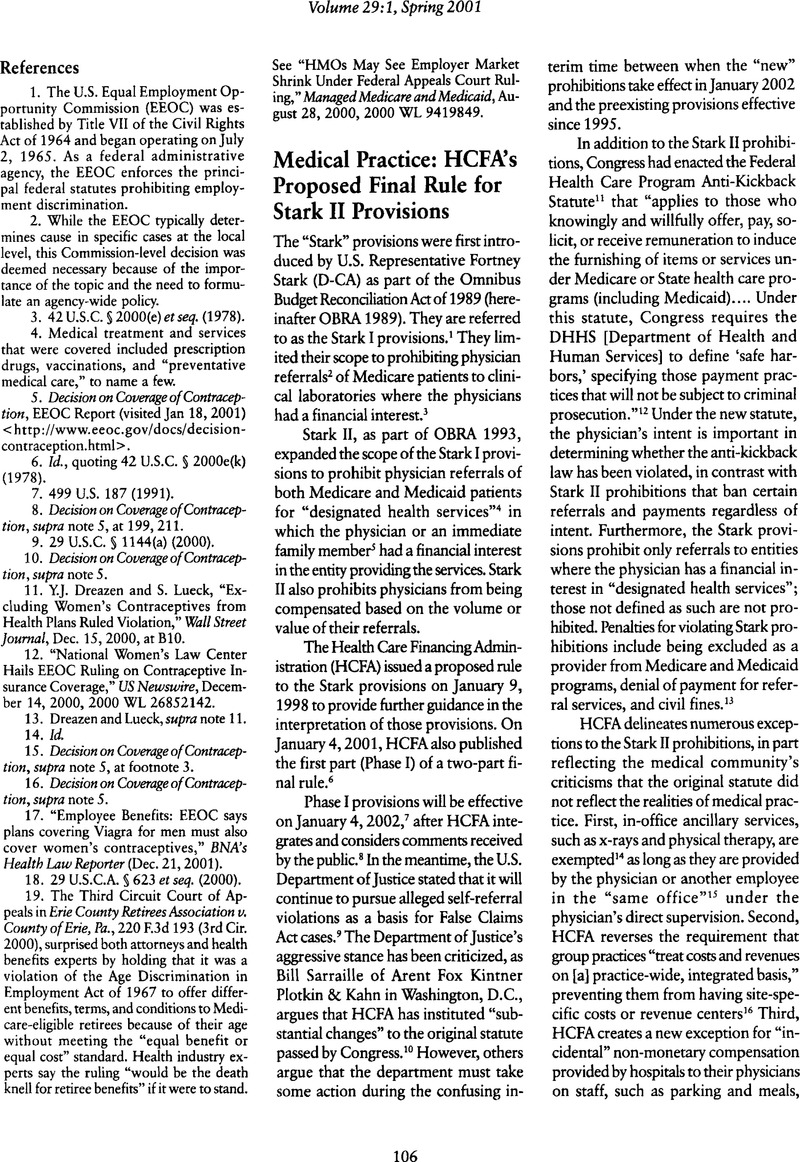This is often referred to as the physician group practice exemption. A “physician group practice” is defined as a group where two or more physicians are legally organized and recognized as a business entity, with a single corporate or federal tax number and/or Medicare billing number, with shared space, billing, staff, equipment, and facilities. These group practices must also meet other strict requirements as defined by HCFA to be exempted from the statute. See “Ban on Physician Self-Referrals,”
supra note 1.
Google Scholar